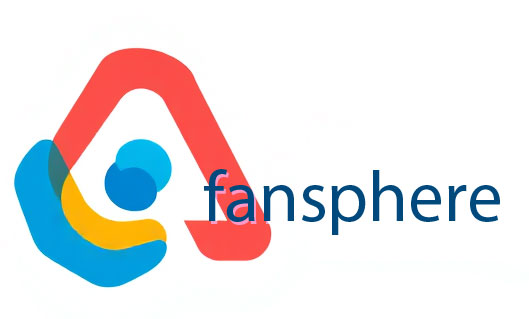¿Recuerdas las películas de ciencia ficción de tu infancia? ¿Coches voladores, robots que nos hacían las tareas domésticas, comunicación instantánea a través de grandes distancias? Durante décadas, todo esto parecía parte de la fantasía. Pero si rascamos en la superficie de los avances tecnológicos actuales, descubriremos que un número sorprendente de esos conceptos antaño fantásticos se acercan cada vez más a la realidad. Es como si la ciencia ficción estuviera celebrando su fiesta de mayoría de edad y todos estuviéramos invitados.
Medicina personalizada: Más allá del tricorder
¿Recuerdas el tricorder del Dr. McCoy en Star Trek? Aquel dispositivo portátil diagnosticaba enfermedades con una rapidez asombrosa. Aunque todavía no hemos llegado a ese punto, la medicina personalizada está evolucionando rápidamente. Las pruebas genéticas, combinadas con análisis avanzados de inteligencia artificial, permiten a los médicos adaptar los tratamientos a la composición genética única de cada paciente. Esto significa medicamentos más eficaces, menos efectos secundarios y, potencialmente, incluso la predicción y prevención de enfermedades antes de que se manifiesten. No estamos replicando los tricorders, pero avanzamos hacia un futuro en el que la asistencia sanitaria es personalizada e increíblemente precisa.
Realidad Aumentada: El mundo real, mejorado
A la ciencia ficción siempre le ha gustado la idea de superponer información digital al mundo real. Desde las pantallas de los aviones de combate hasta las detalladas proyecciones holográficas de innumerables películas, el concepto de realidad aumentada (RA) ha sido un elemento básico. Hoy en día, la RA ya está aquí, aunque todavía se encuentra en sus primeras fases. Piensa en Pokémon Go, pero imagínalo a una escala mucho mayor. Las gafas de realidad aumentada podrían guiarnos por ciudades desconocidas, proporcionar traducciones en tiempo real, mejorar nuestra comprensión de sistemas complejos (¡imagina superponer diagramas anatómicos a un paciente durante una operación!) e incluso crear experiencias de juego inmersivas que mezclen a la perfección lo virtual y lo real.
Ciudades inteligentes: La utopía urbana (casi)
Las megaciudades en expansión de Blade Runner pueden parecer un poco distópicas, pero el concepto central -entornos urbanos interconectados y tecnológicamente avanzados- es algo que estamos persiguiendo activamente. Las ciudades inteligentes utilizan sensores, inteligencia artificial y macrodatos para optimizar todo, desde el flujo del tráfico y el consumo de energía hasta la gestión de residuos y la seguridad pública. Estos sistemas interconectados pueden conducir a una asignación más eficiente de los recursos, a una reducción de la contaminación y, potencialmente, a una distribución aún más equitativa de los recursos. Aunque siguen existiendo retos (problemas de privacidad, brechas digitales, etc.), la visión de una ciudad más inteligente y eficiente se está convirtiendo rápidamente en realidad.
Interfaces cerebro-ordenador: Acortando distancias
La idea de conectar directamente nuestros cerebros a los ordenadores ha sido un pilar de la ciencia ficción durante décadas, a menudo descrita como una forma de mejorar las capacidades humanas o incluso de lograr la transferencia de la conciencia. Aunque todavía no estamos subiendo nuestras mentes a la nube, se están haciendo avances significativos en las interfaces cerebro-ordenador (BCI). Estos dispositivos ya están ayudando a personas paralizadas a recuperar cierto control motor, permitiéndoles manejar prótesis o sillas de ruedas con el pensamiento. El potencial futuro es inmenso: desde el tratamiento de trastornos neurológicos a la mejora de las capacidades cognitivas, pasando por nuevas formas de comunicación.
Vida sostenible: Una ficción necesaria
Muchos relatos de ciencia ficción exploran temas como el colapso medioambiental y la necesidad de soluciones sostenibles. No se trata sólo de una preocupación ficticia, sino de un problema acuciante en el mundo real. Hoy asistimos al desarrollo de tecnologías innovadoras para hacer frente al cambio climático, desde avanzados paneles solares y turbinas eólicas hasta sistemas de captura de carbono y prácticas agrícolas sostenibles. Aunque los retos siguen siendo inmensos, la urgencia de la crisis climática nos empuja hacia soluciones que antes se consideraban pura ciencia ficción.
Impresión 3D: La Replicante, casi
El replicador de Star Trek -ese dispositivo mágico que podía crear cualquier cosa, desde una taza de té Earl Grey hasta una nave estelar completamente ensamblada- puede parecer descabellado, pero la impresión 3D avanza rápidamente. Ya la utilizamos para crear de todo, desde prótesis hasta casas, y la tecnología mejora constantemente en cuanto a velocidad, precisión y materiales. Aunque todavía no podemos imprimir una nave estelar, la capacidad de fabricar rápidamente objetos complejos bajo demanda está transformando industrias y tiene el potencial de revolucionar muchos aspectos de nuestras vidas.
Exploración espacial: Más allá del abrazo de la Tierra
Los viajes espaciales siempre han sido uno de los temas principales de la ciencia ficción, y nuestros avances en este campo van cada vez más allá del reino de la fantasía. Aunque todavía no tengamos motores warp, los cohetes reutilizables están haciendo que los viajes espaciales sean más asequibles y accesibles. Las empresas privadas están llevando a cabo planes de colonización lunar y marciana, y proyectos ambiciosos como el telescopio espacial James Webb están ampliando los límites de nuestra comprensión del universo. La exploración del espacio, antes confinada a las páginas de las novelas y las pantallas de cine, se está convirtiendo en una realidad tangible.
Robótica e inteligencia artificial: El auge de las máquinas (¿tal vez?)
Los robots y la inteligencia artificial son quizá los tropos más destacados de la ciencia ficción, cada vez más relevantes. Desde simples sistemas automatizados en fábricas hasta sofisticados asistentes de IA en nuestros smartphones, estas tecnologías ya están transformando nuestra vida cotidiana. El desarrollo de una IA cada vez más sofisticada plantea importantes cuestiones éticas, pero los beneficios potenciales son inmensos, desde la mejora de los diagnósticos médicos a sistemas de transporte más eficientes, pasando por una posible ayuda en la lucha contra el cambio climático. Es probable que el futuro implique una colaboración más estrecha entre los seres humanos y la IA, que conduzca a un mundo en el que ambos puedan prosperar. ¿Qué es la colonización espacial?
El elemento humano: La variable imprevisible
Es importante recordar que la tecnología, por muy avanzada que sea, es en última instancia una herramienta creada por la mano y las intenciones humanas. La ciencia ficción explora a menudo los peligros potenciales de un avance tecnológico incontrolado, y estas advertencias son cruciales a medida que navegamos por las complejidades de un mundo que cambia rápidamente. Las implicaciones éticas de la IA, el potencial de desigualdad social exacerbado por los avances tecnológicos y la necesidad de una innovación responsable son cuestiones que requieren una cuidadosa consideración. El futuro no está predeterminado; es un tapiz tejido a partir de nuestras elecciones, nuestros valores y nuestra visión colectiva.
La mezcla de ciencia y ficción no es una mera coincidencia; es un poderoso motor de progreso. La ciencia ficción inspira la innovación, amplía los límites de lo posible y nos obliga a lidiar con las implicaciones éticas del avance tecnológico. Ahora que nos encontramos en la cúspide de una nueva era, está claro que el futuro está llegando más rápido de lo que podríamos haber imaginado. Y es un futuro que se parece mucho a los que hemos soñado durante décadas.

























Añadir un comentario